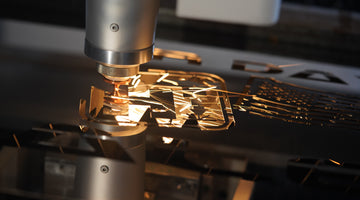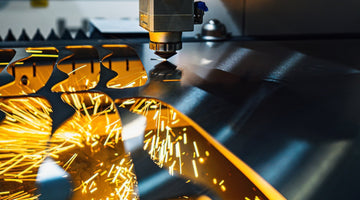Fiber vs Plasma
Cleanup is about 75% better, and that much easier with a fiber laser over a plasma cutter, which is ultimately a favorite among people that do not love grinding metal.
If you're looking to cut metal or other similar materials, you'll find multiple options. Two of the most popular options are fiber lasers and plasma cutters. Both a plasma cutter and a fiber cutter can produce fantastic results. But for many applications, one will be clearly better than the other.

Laser Cutters
Laser cutters can cut everything from plastic to metal. Within the laser cutter industry, there are two major types of laser cutter: CO2 and fiber. Fiber cutting is a relatively new technology and provides superior overall quality.
Regardless, fiber lasers are fast, precise, and focused. They have a cutting precision up to 0.05 mm and don't damage the product they're cutting — they are non-contact. But there is a downside: fiber lasers tend to be more expensive than a plasma cutter.

Plasma Cutters
A plasma machine cuts with a high-temperature arc of plasma. This is very effective. But it's not very precise. A plasma cutter can only cut up to 0.1 mm of tolerance and it cuts fairly slowly. Plasma cutters may leave lingering damage on the material. And there will be a larger cutting gap. But one of the major benefits to plasma cutting is that it's less expensive. A plasma machine will cost less to buy and operate.
Choosing Between Laser and Plasma Cutting
For most applications, a fiber cutter is going to be better. Fiber cutters have better precision, are faster, and cause less damage to the surrounding material. They also lead to less material waste. There's only one advantage a plasma cutter really has over a fiber laser: Plasma cutters are less expensive.

Watch Matthew and his crew tune in a 6kw Fiber Laser with Exchange table, and deliver it to it's new home at the end of the video:








